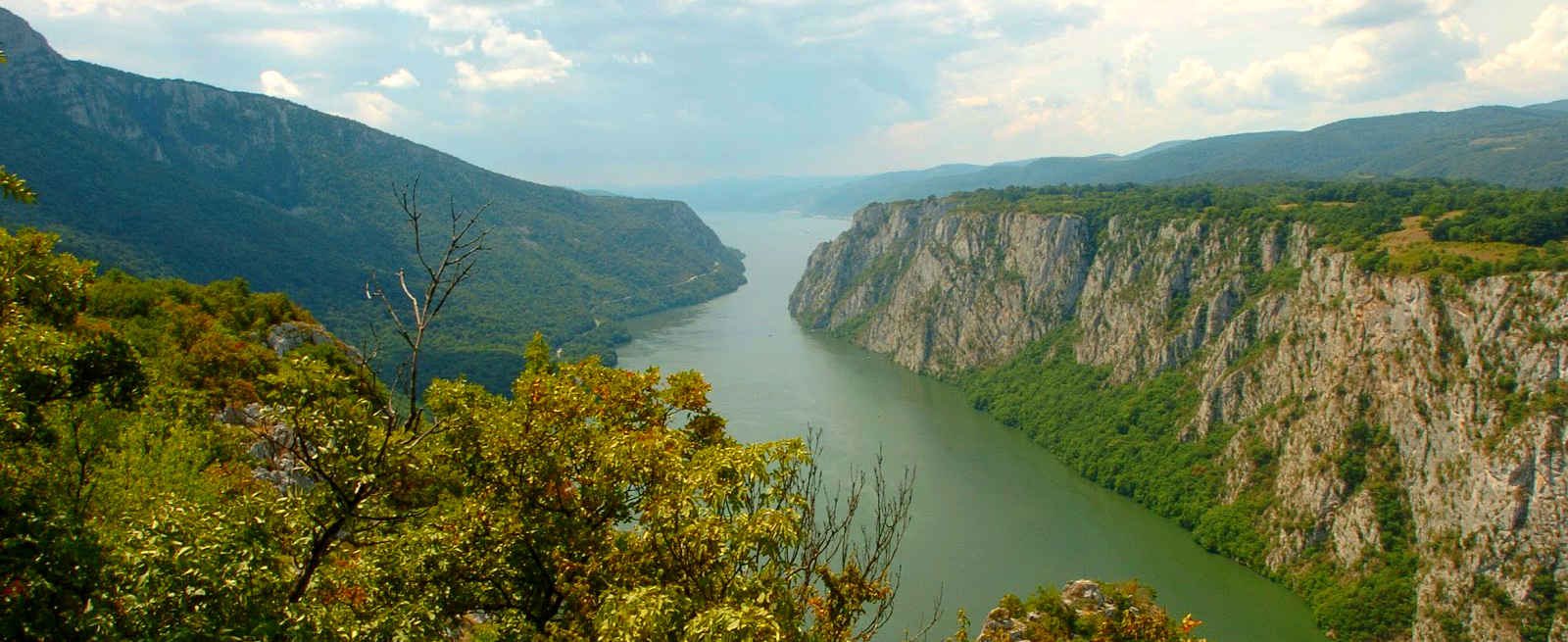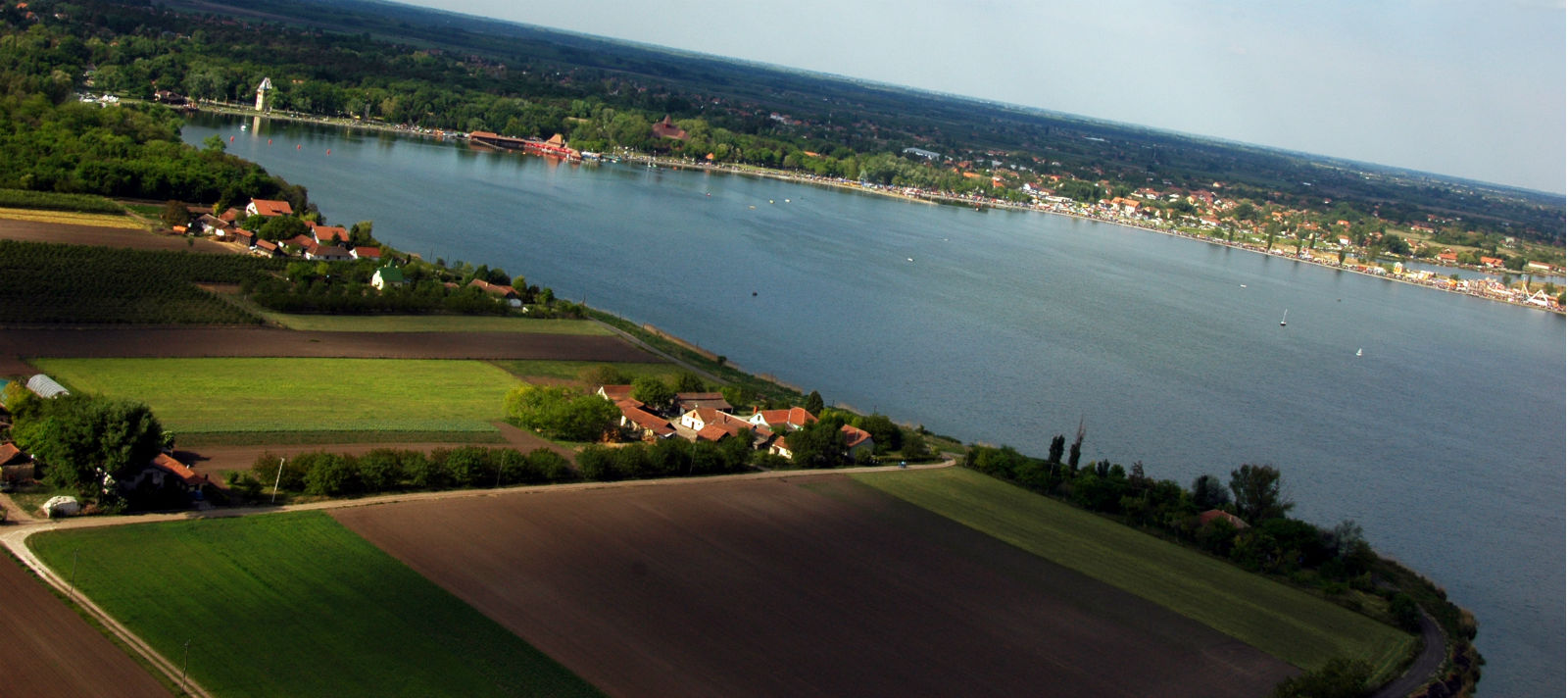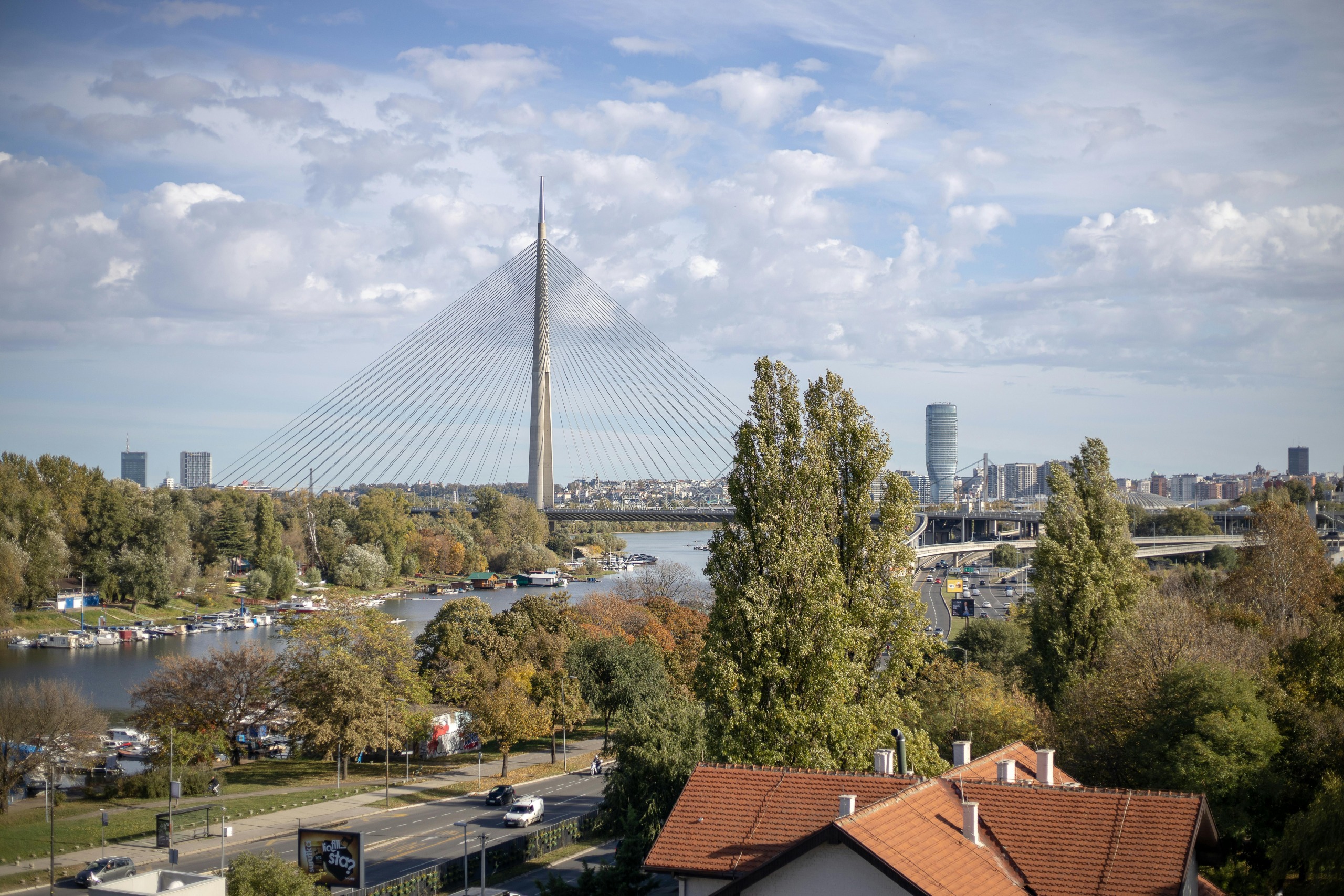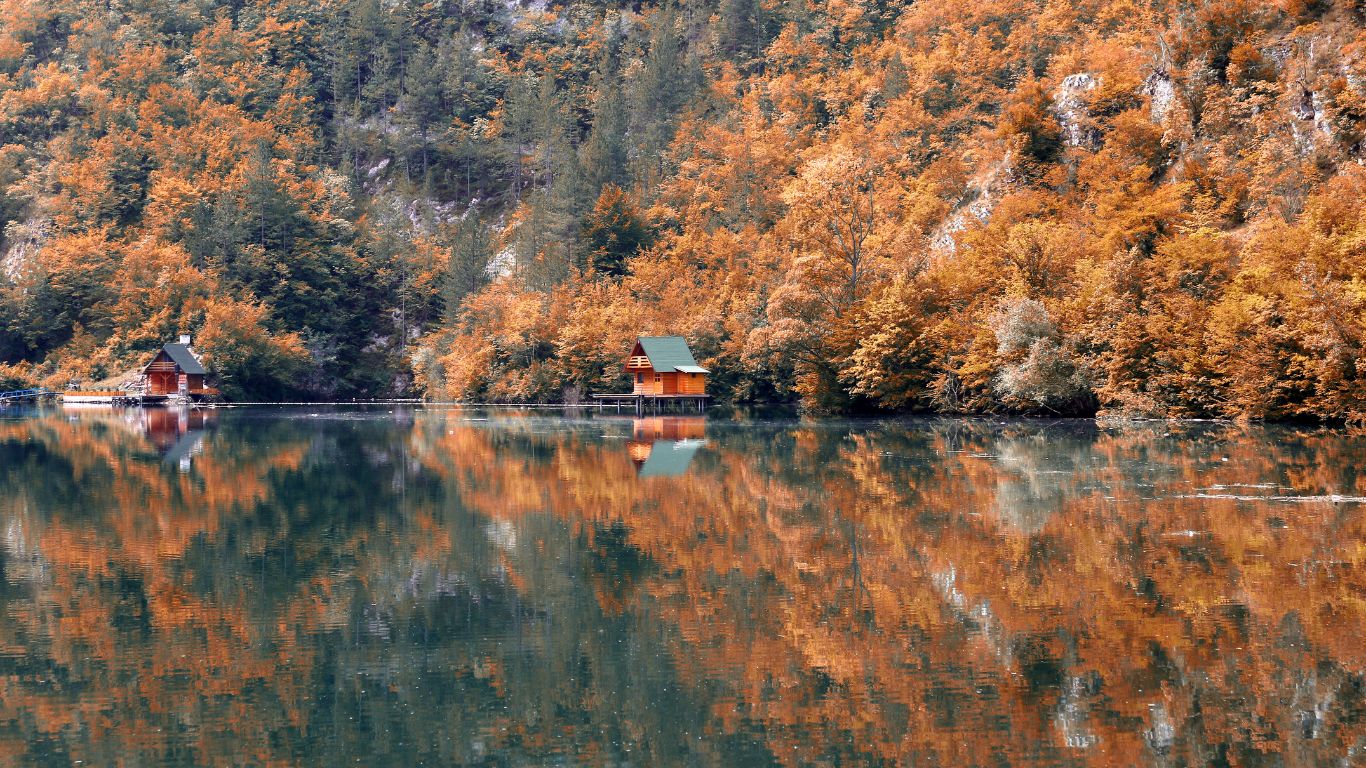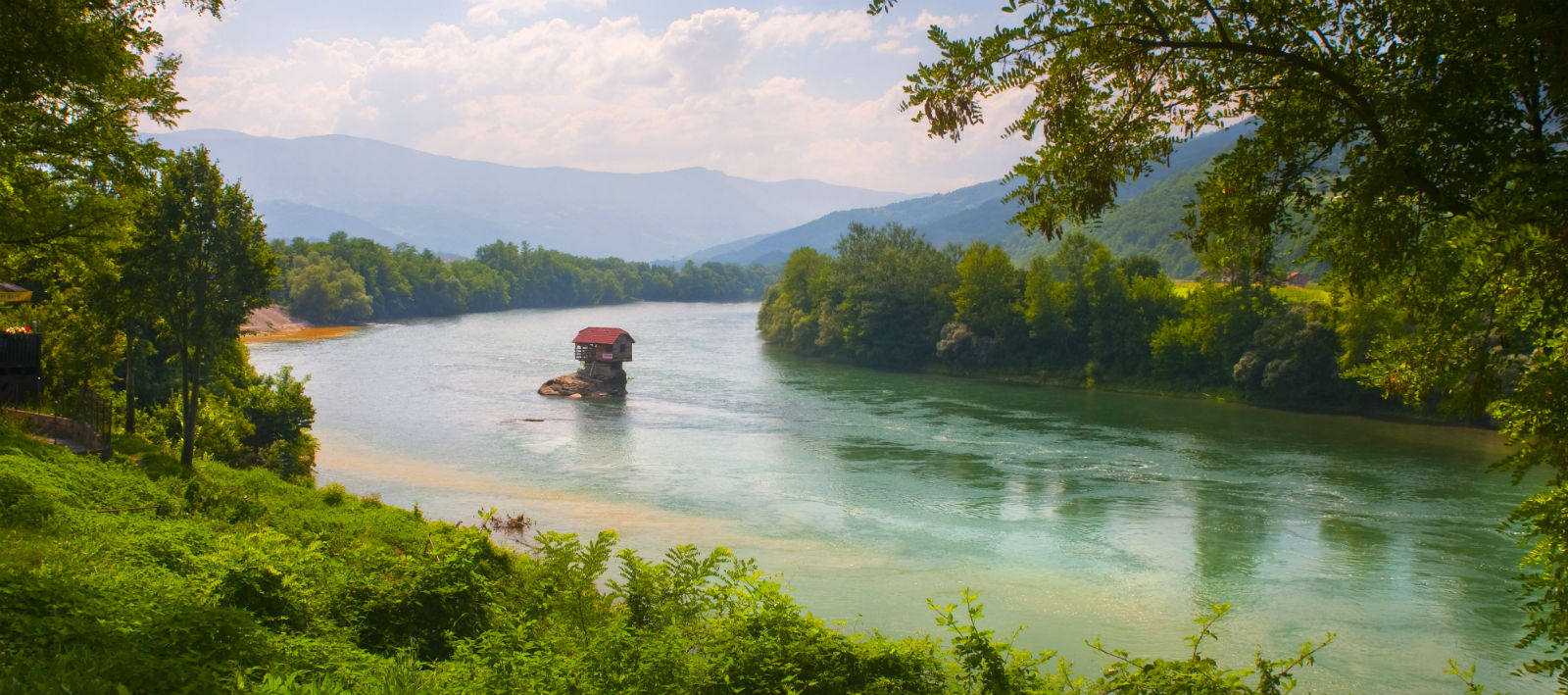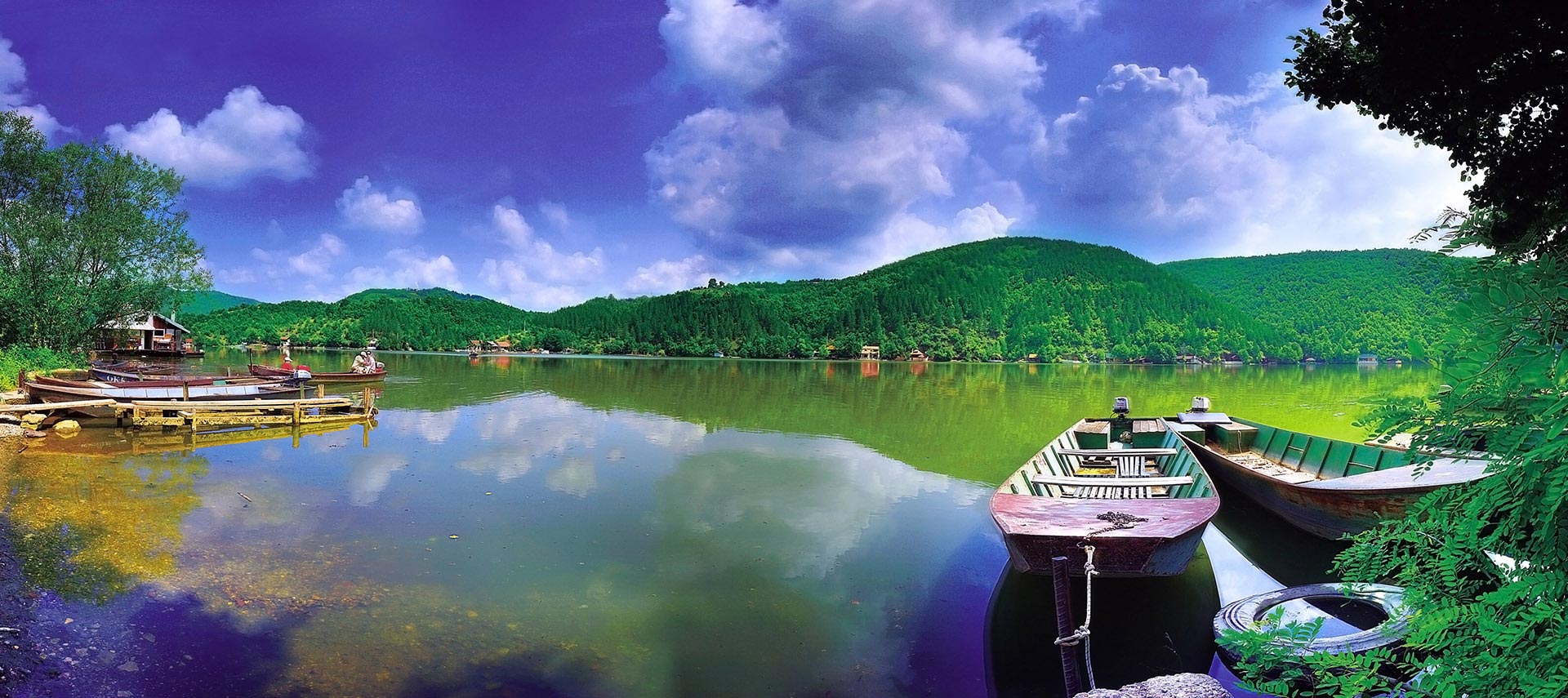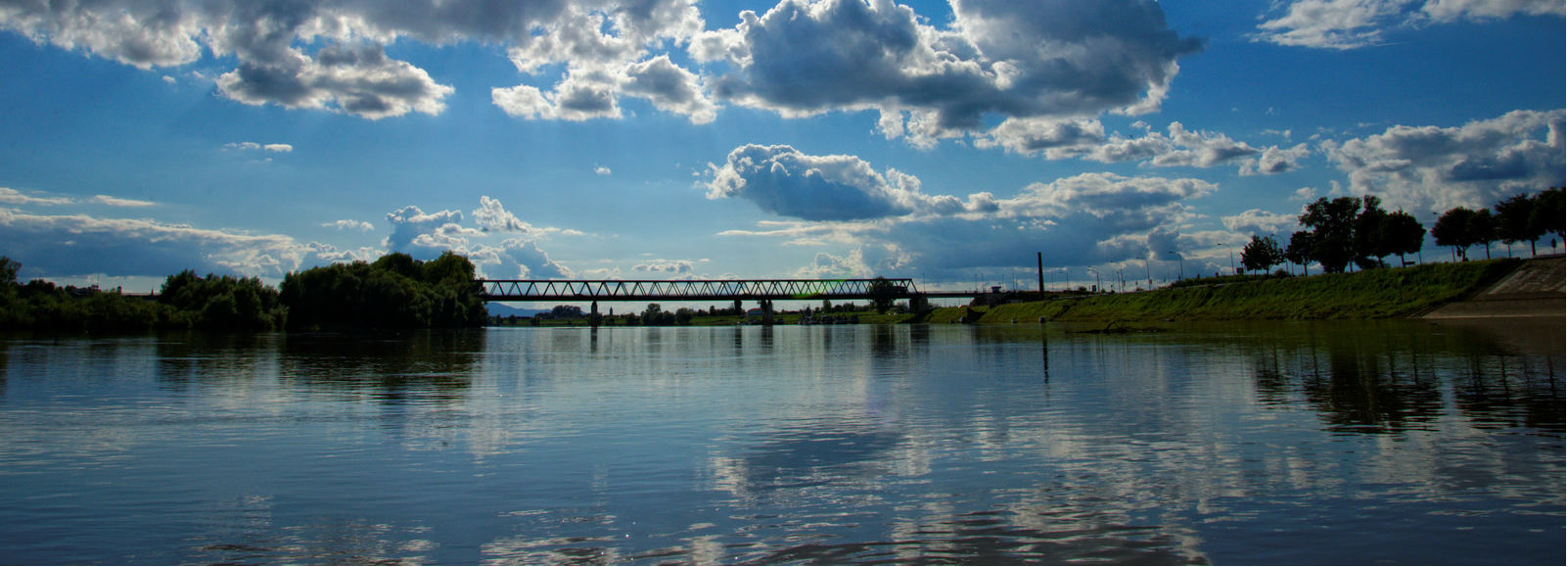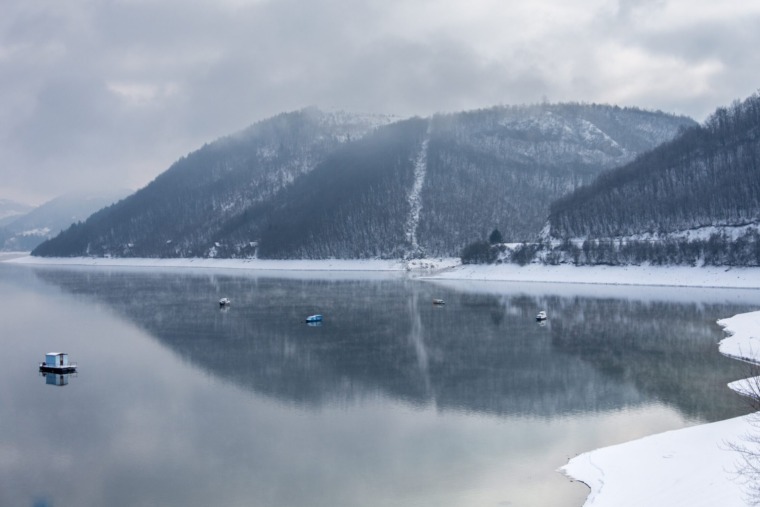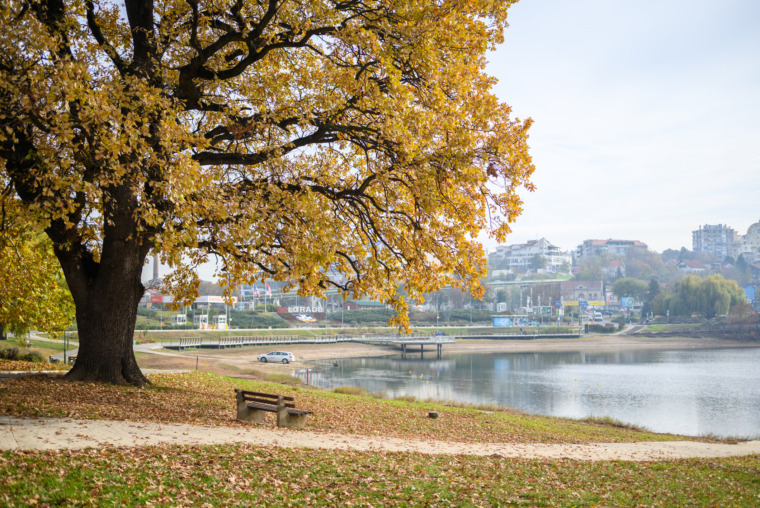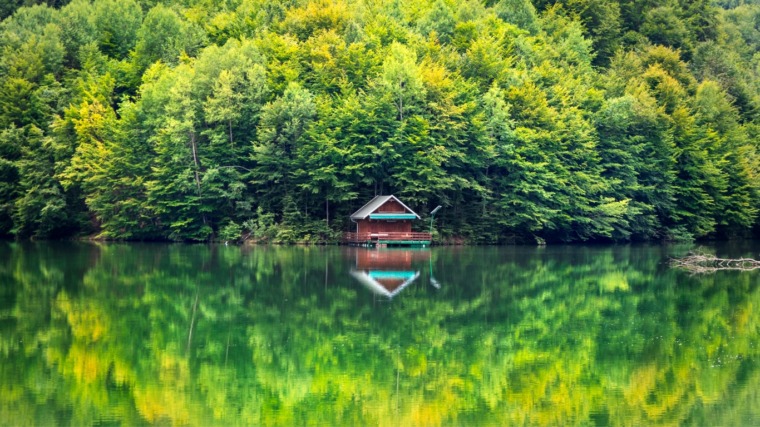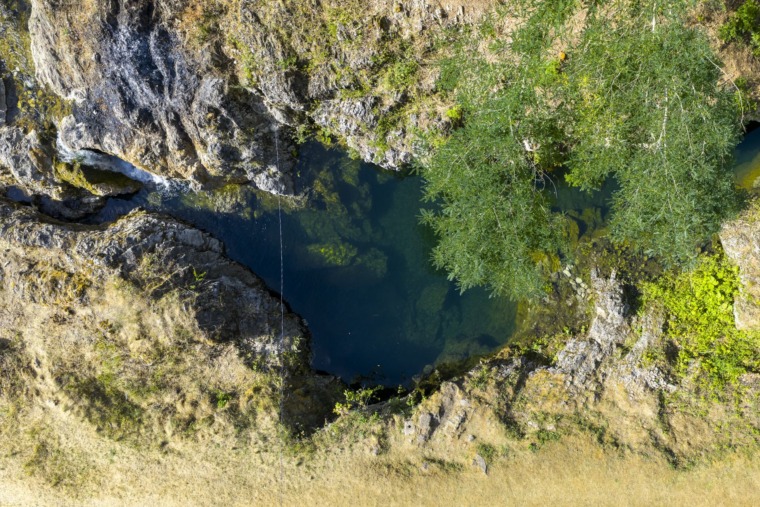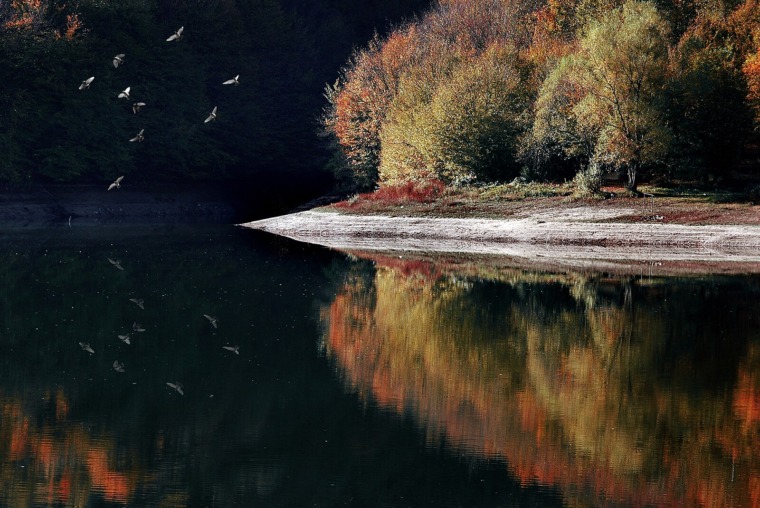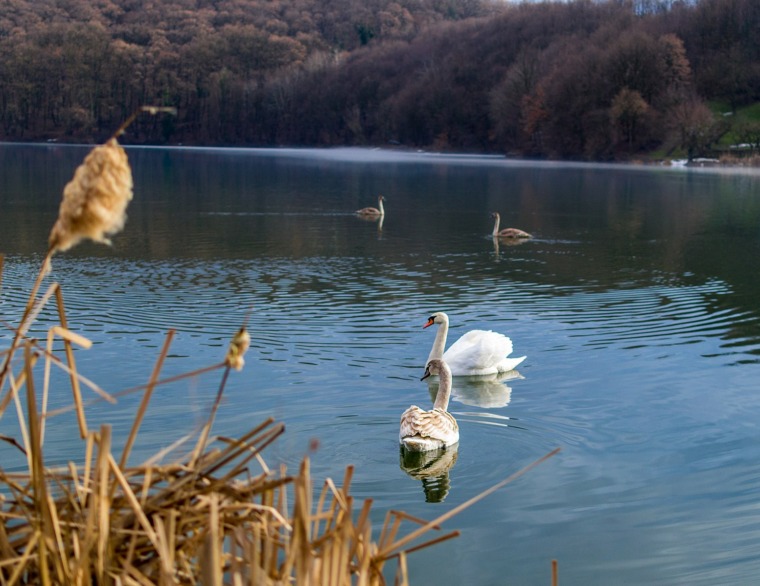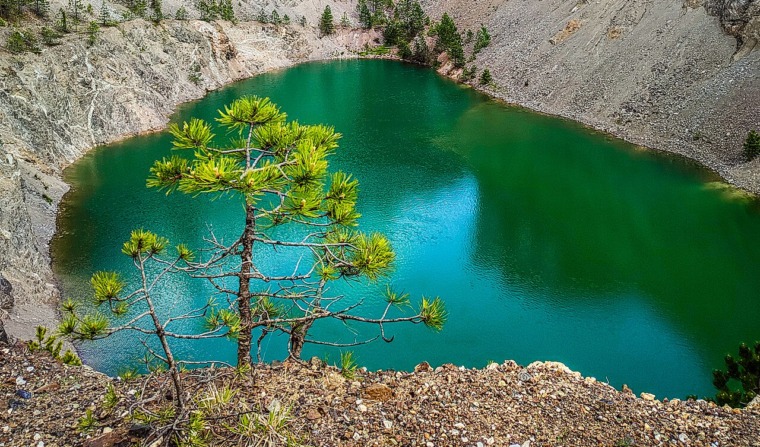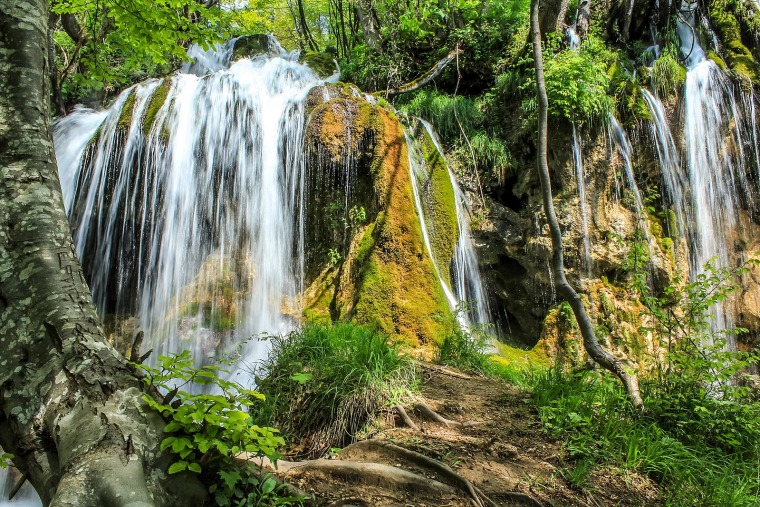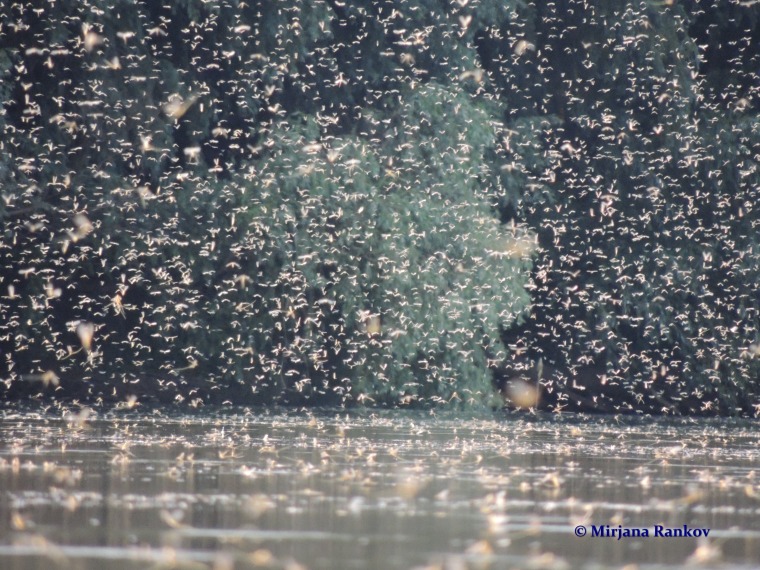Spreading at over 63,000 acres of plant and animal abundance of priceless value and beauty, Đerdap National Park is also known as the Iron Gates of the Danube.
Gorges, canyons, river valleys and over thousand caves of extraordinary beauty are hidden on the right bank of the river, from the Golubac fortress to the ancient fort of Diana.
Inexorable winds spread the scent of the Danube refreshing the landscape and creating a seamless harmony between nature, rare animal species and humans; a sense of calm and pleasant tranquility freshens the mind and envelops the heart with warmth.
This harmony of the most beautiful and most remarkable gorge on the Danube makes the visitors feel as if they stepped into another world. Into the world of cultural and historical sites such as Lepenski Vir and Golubac city, where people lived for thousands of years – according to the archaeological findings.
The wealth of the region is also reflected in the large number of unusual plant and animal species. Here you will be able to see lynx, wolf, jackal, owl, black stork, as well as smell the lilac, yarrow, golden fern, bellflower of Đerdap and hundreds of other unusual and strictly protected plant species.
 Because of the unusual compound of cultural and historical attractions, as well as rare plant and animal species, Iron Gates National Park is rightly called the greatest naturalistic and archaeological museum in Europe.
Because of the unusual compound of cultural and historical attractions, as well as rare plant and animal species, Iron Gates National Park is rightly called the greatest naturalistic and archaeological museum in Europe.
This natural phenomenon of fascinating beauty and incredible geological diversity shyly bears the title.
Đerdap’s diversity is reflected in numerous rocks of various compositions that have emerged from the Paleozoic to the present day. This long and enduring process, together with the Danube’s successive notching of the Carpathian mountain range, created the Iron Gates, leaving behind – here and there – steep and vertical sides that rise above the river level up to 800 meters.
The deepest, largest and most attractive gorge in Europe consists of four gorges of imposing beauty: Golubac, Gospođina Vira, Kazan and Sipska. However, the most interesting and geomorphologically specific landscapes are the areas of Štrpce, as well as the areas of Great and Small Kazan, where the Danube demonstrates its narrowest (140m) and deepest (90m) points.
Lepenski Vir
 One of the most important archaeological sites in Serbia is found on the Danube ”terrace” at the Iron Gates.
One of the most important archaeological sites in Serbia is found on the Danube ”terrace” at the Iron Gates.
Excavations in the sixties resulted in the following archaeological findings: religious architecture, monumental sculpture from the period of 7000 to 6000 BC, and a large number of tools, jewelry, tiles and tombs which indicate that the original hunter-gatherer communities established complex social relations and a unique style of architecture in this place.
Due to the original architectural designs and monumental sculptures, the culture of Lepenski Vir stands out as a distinct and very early stage of prehistoric European culture, and it is one of the world’s most important sites, 9000 years old.
If you visit this area, do not miss to visit this prehistoric site and the Museum of Lepenski Vir.
The Golubac fortress
The Golubac fortress, also know as “The Guardian of the Danube”, is located on the right bank of the Danube, at the entrance to the Iron Gates. No one stays indifferent before the beauty, strong walls and turbulent history of this Danubian belle.
The first written mention of the origin of the fortress dates from 1335., but the exact time when this small fortified city was built – remains unknown to this day.

There are ten towers in Golubac. The original and true builder of the fort bestowed nine towers upon it, and placed them in the front, rear and upper part of the town, but the Turks erected the tenth tower and strengthened the fort with loopholes.
All towers are shaped quadrilateral except the donjon (the strongest tower in the fortress, and the last resort for defenders) which has a polygonal base, whereas the upper part is cylindrical, and is therefore named “The Hat Tower”.
Traian’s Table (Tabula Traiana)
Traian’s Table is part of the ensemble of Roman monuments on the Roman road through the Iron Gates; carved into the rock in rectangular shape, it bears a text, in Latin, dedicated to the Emperor Traian.
 It is assumed – on the basis of this inscription – that Traian built a part of the Đerdap road in Donja klisura (The Lower Gorge) in preparation for the war against the Dacians.
It is assumed – on the basis of this inscription – that Traian built a part of the Đerdap road in Donja klisura (The Lower Gorge) in preparation for the war against the Dacians.
Besides the opportunity to look at the extraordinary landscapes and enjoy beautiful nature, cruising Danube will provide a tour of this ancient Roman monument, which can only be approached on the river; so, we encourage you to not miss this adventure that will point out the great importance of the Iron Gates for the Roman Empire.
In addition to visiting natural and cultural heritage, which is generously offered by this beautiful gorge, the visitors often enjoy hiking, hunting, fishing, bird watching, beautiful lookouts, walks and nicely landscaped walkways.
The beauty and all natural, animal and cultural wealth of the Iron Gatess Gorge cannot be fully described, so it is best to see for yourself the magical compounds of this Danubian gem and enjoy Europe’s most attractive and largest gorge.
An interesting interpretation of the origin of the Danubian gorge was developed by Jovan Cvijić who started from the fact that 10 million years ago Panonian and Vlach-Pontic basins were filled with seas from which protruded the islands. These two seas were separated by low-Carpathian-Balkan mountain range, and between them, there were several connections in the form of straits, following the route of today’s Danube. Later, the level of the Vlach-Pontic sea began to decline, which caused the water to overflow from the higher into the lower Vlach-Pontic sea. So, the Danube inherited some traits of these islands, and traces of further deepening were preserved in the form of terraces.
How to get to the Iron Gates gorge?
The fastest way to the Iron Gates is the main road Belgrade – Kladovo which is also called The Iron Gates Highway. If you are coming from Belgrade, you will need to travel 130 kilometers. From Niš, the best way to go is via Zaječar, Negotin and Kladovo.
Bus departures from Belgrade to the Iron Gates are frequent, and if there are no direct bus lines to the Gates from other Serbian cities, it is recommended to take the bus to Kladovo and Donji Milanovac, and then, a local bus to Golubac.
But, it is best to get to the Iron Gates on the waves of the Danube. There are organized ships tours in Belgrade, as well as cruise ship tours from Europe.

